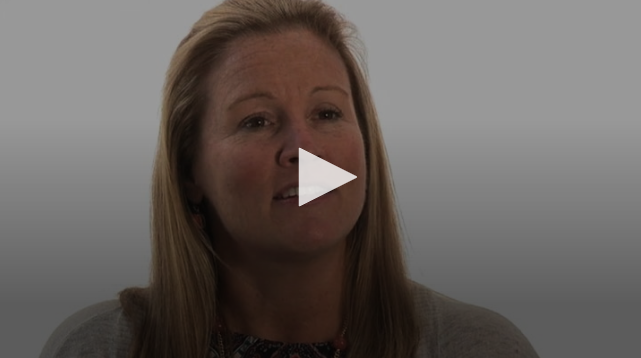Social media is more than posting pictures of your dog or finding new recipes. It’s one of the most powerful ways to refine your craft as an educator. For teachers, social media is a valuable resource for collecting new ideas, activities, and methods to bring into their classrooms.
In this video, Tch Laureate Kristin Gray talks about the impact of social media on her practice as a math specialist.
Social media, Twitter specifically, is a high impact form of professional development. In my time as a connected educator, I’ve gained more from my conversations on Twitter than any professional workshop, conference, or summit. This includes collaborating with teachers and administrators from around the globe, connecting with authors of popular books and subsequently Skyping with them during my classes, participating in Twitter chats, building relationships with nearby teachers and attending conferences together, and more. With today’s ever-changing world, teachers can’t afford to be disconnected from this platform. We owe it to ourselves and our students.
Whether you’re a new teacher and thinking about how you can join in the magic, or an experienced teacher looking for a way to grow your practice, follow these tips to help you get started.
Getting Started
When you first sign up for Twitter, you have a few decisions to make:
- What’s your goal? Are you looking to learn from and collaborate with teachers or do you want Twitter to serve as a news outlet for your school community? Both? Having a clear vision of what you want to get out of the experience will help shape where you go.
- How do you want to identify yourself? Will you use the account from your perspective as a teacher or will you create an account to represent your class? The latter is a popular option for those who want to share more with their community about classroom happenings.
- Choose your handle. Choose something that correctly labels you and how you want to be represented. If you teach science, perhaps you want to include that in the handle you select. If you’re the school librarian, you might consider making an account with the library’s name.
- Create a brief bio that includes specific information about your role in education. You don’t have to include your district’s name (although that can be very helpful), but make sure that you say what it is you teach or what your function is in the building. This helps identify you and your interests. You can also include your credentials, the experience you have, and the like. It shows people that you know what you’re talking about.
- Choose a profile photo. Other than your username, this picture is the first thing other users see. Due to size limitations, headshots work best. If you want something casual, consider taking a “selfie” in your classroom. If putting your image on the web concerns you, get creative. You can use a Bitmoji, clipart, or even stage a nice display of items that represent you (like a stack of books for a reading teacher).
Your First Tweet
Now that your account is active, it’s time to jump right in! No one ever learned anything from sitting on the sidelines. The easiest way to begin is by composing your first tweet. It could be something that’s on your mind, a quote, or even a basic introduction. Think of tweeting as having a conversation. How would you introduce yourself to someone new? Your only limitation is the length. Twitter restricts tweet length to 280 characters or less. This helps discussions stay direct and to the point. Twitter is a two-way street — you have to put yourself out there and participate in order for it to have value.
It’s Hashtag Time
A hashtag is basically a curation “tag” that anyone can use to discuss a topic. Start by searching for hashtags related to your work in education. When you search, all of the posts by Twitter users featuring that hashtag will pop up in the results. It’s an excellent way to find information and users with whom you share common interests. A few of my favorite hashtags include:
- #edchat
- #mglit
- #kidlit
- #edtech
- #tlap
- #bookaday
- #teachers
- #titletalk
- #nerdybookclub
- #teachingchannel
- #kidsdeserveit
- #MGBookVillage
- #FlipgridFever
A particularly helpful hashtag for new teachers is #ntchat.
You can also find amazing lists of hashtags on Twitter by doing a simple search on Google. There are more than you can imagine. Pick one, click on it, and start reading the tweets. Participate in the discussions by replying and sharing your thoughts. Exchange ideas. Tell others what works for you. You can even share graphics, photos, or links. And… don’t forget to add the hashtag in your response.
Building Your PLN
A PLN (Professional Learning Network) is the heart of Twitter. It’s the group of individuals from whom you gain the most. While working with hashtags you’ll come across many people, including authors, administrators, public speakers, and other professionals in the field. If you see someone who has great information, follow them. This will curate their tweets into your news feed. If you decide later that what they share isn’t for you, simply unfollow them. There are thousands of educators just like you who use the platform as a way to gather new ideas and information. Connect with them. Some of my favorites include:
- Donalyn Miller: @donalynbooks
- Dave Burgess: @burgessdave
- Todd Nesloney: @TechNinjaTodd
- Alice Keeler: @alicekeeler
- Paul Solarz: @PaulSolarz
- Pernille Ripp: @pernilleripp
- Beth Houf: @BethHouf
I also encourage you to seek out authors, scientists, researchers, and any other professionals that relate to your content area. Because I teach English Language Arts, for example, the bulk of those I follow are children’s authors. Find the people who could potentially have information to support your work.
Give & Receive
If you find something helpful online, share it on Twitter. Include hashtags that relate to its content so other educators can find it. You’ll gain quite a bit in return. The more you put out there, the more followers and connections you’ll make which, in turn, will result in even more opportunities that will impact you as a professional and your classroom.
When sharing articles and information on social media, it’s always good practice to:
- Read the entire article before sharing. The quality of what you share is a reflection on you as a professional.
- Add a personal statement or a quotation from the article or resource that you found particularly helpful. This will give others a little insight into why you shared the content and what you found interesting about it.
Don’t Feel Obligated
Twitter moves fast and it can be overwhelming. If you miss a tweet, the world isn’t going to end. Use Twitter how it suits you. Don’t feel obligated to read every bit of information as it appears. In fact, once you start building your list of people to follow, it’s almost impossible to read every single tweet. Enjoy what’s there when you are. And if you want to dig a little deeper, remember the hashtag.
Flex Those Muscles
Becoming active on Twitter requires a consistent presence. Think of it as going to the gym. If you sign up and only attend a few sessions, you’re not going to get the desired results. The same holds true here. If you can’t log in every day, that’s fine — but make a point of checking in a few times a week. This will help you stay current.
Twitter is an amazing resource for educators today. Staying connected with others in the field is crucial to helping expand our knowledge. I can’t express how much I’ve learned from this amazing resource and I hope you find it just as useful!
For more on Twitter and other social media platforms, check out these great resources:







